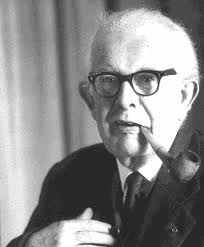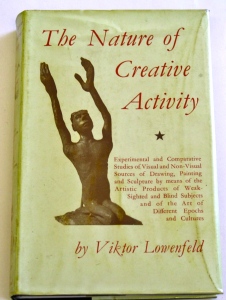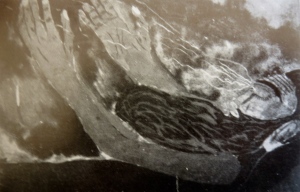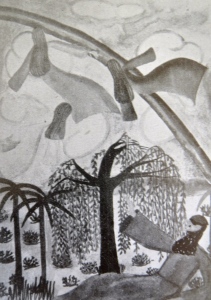Viktor Lowenfeld, Austrian, (1903-1960) Professor of art education at Pennsylvania State University. While previously in Vienna, served as director of art in the Blind Institute.
The Nature of Creative Activity (1939) postulated two opposite types of perceptual orientation, haptic and visual, which are reflected in artistic production. Evolved from many years of observation of children’s art work in Austria and America. They are opposite types, but people will be on a spectrum. Most normal-sighted people are of the visual type, but a sizeable minority aren’t – perhaps up to 25%.
Lowenfeld believed these differences to be innate, deeply-rooted psychological characteristics; he did not believe it is possible to move from one mode of perception to other. Art teachers must always cater for both.
Haptic:
Concerned with bodily sensations and subjective experiences in which he or she is emotionally involved
Subjectively and emotionally oriented, relying more on kinesthesis than vision.
Feels as a participator; the self is projected as the true actor of the picture
Confines his world to things that can be perceived by means of touch or bodily sensations
Does not analyse the world but is concerned with projecting his inner world into the picture
3D space and distances are shown by a “perspective of value only” e.g. objects drawn larger or smaller in relation to their emotional significance rather than apparent distance from observer
Haptic perception is “the synthesis between tactile perceptions of external reality and those subjective experiences that seem to be so closely bound up with the experience of self” (The Nature of Creative Activity, p. 82).
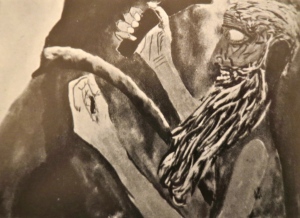 “Moses strikes the rock that water may flow”
“Moses strikes the rock that water may flow”
Visual
Feels more like spectator than participant. Seeks experience outside the body.
Concerned more with an objective analysis of visual detail.
Representational work is portrayed from the point of view of an observer who is concerned with the appearance of things rather than with their subjective meaning
Analytical approach – a spectator who finds his problems in the complex observation of the ever-changing appearance of shapes and forms; who seeks to analyze this total impression into a detailed or partial impression, and to synthesise these parts into a new whole.
 “Moses strikes the rock that water may flow”
“Moses strikes the rock that water may flow”
—–
This way of understanding perception is extremely interesting to me. Unlike Lowenfeld, I do believe it is possible to shift from one mode of perception to another. I believe this because over many years my own perception is shifting, from an entirely visual one towards one where visual and haptic perceptions are much more evenly balanced. It’s something that I not only welcome, but positively encourage. The shift is bound up with my regular engagement in various activities over a period of more than a decade: dance, meditation and yoga.
My last two major artworks were both performances done ‘blind’, in gear which did not allow me to see, making me reliant on touch and kinesthesia. I intend to do the same in my degree show.
